Sunday at Bill's Mother's: 8th June 2025
Ultra Women. Fishing fridges from city rivers. And the next steps along the Sheaf.
Morning. 45 years ago, women weren’t allowed to enter the Olympic marathon. Before the Olympic change in 1984, famous advocate for women’s distance running Katherine Switzer (the first woman to run the Boston Marathon after officials assumed entrant K.V. Switzer was just another man) is reported as saying:
“We’re trying to prove to people that women are just as suited, or even more suitable, for marathoning as men.”
Sheffield runner and medical journalist Emma Wilkinson joined ultra runner and fellow journalist Lily Canter to write a new book adding to that proof.
In today’s post, runner, writer (and my former editor) Ellen Beardmore talks to Emma and Lily about their book, and learns how women have many advantages for endurance events, but often still find an uphill battle when they take part.
We also have more news of our fellow citizens wading in to help our rivers recover, in order to serve all the wild creatures of our city.
And thank you to the new paying subscribers who’ve joined us this week. If you like this kind of thing arriving in your inbox or app every few days, the only real way to make it happen (and fight back against those terrifying anti-social media billionaires) is to join us with a pocket money per month subscription. The more of you who upgrade, the more we can do.
Ultra Women - feature by Ellen Beardmore
At the Sheffield launch of a new book exploring the remarkable endurance feats of women, an ironic moment proved precisely why it needs to exist.
“Someone told me at the launch she had recently won a race, but the women’s trophy at the end was half the size of the men’s”, said Lily Canter, one of the co-authors of Ultra Women: The Trailblazers Defying Sexism in Sport.
“This kind of story is still happening, endurance running is seen very much through a male lens. We’re trying to push back on that.”
Buckle up because Ultra Women is a wild ride of a read.
Whether you are an avid runner of ultras - defined as anything over marathon distance - an enthusiastic but average plodder (ahem) or have never heard of Jasmin Paris; it’s absolutely gripping.
The book is the first in-depth investigation into the unexplored history of female endurance.
It looks at the science behind sports performance to question if different fat stores, muscle fibre distribution and capacity for sleep deprivation give women an advantage over men in ultra sports of more than six hours. And mountains of evidence show the answer is ‘yes.’
Lily and co-author Emma Wilkinson have trawled research and records to uncover fascinating studies.
One was an exhaustive review of thousands of trail racers which found that as distances grew, the difference between men and women’s performance shrank.
These findings are brought to life through the inspirational stories of women smashing records and taking on unimaginable challenges.
There’s 1980s American swimmer Lynne Cox, who swam places nobody else had, in temperatures nobody else would. She was faster, too.
Remarkably scientists found her body temperature actually increased during cold water immersion, rather than decreasing. Today she remains the only person to have ever swum the 53-mile Bering Strait between the USA and the then Soviet Union.
There’s also ultrarunning rockstar Jasmin, who grew up in the Peak District and has made recent history multiple times.
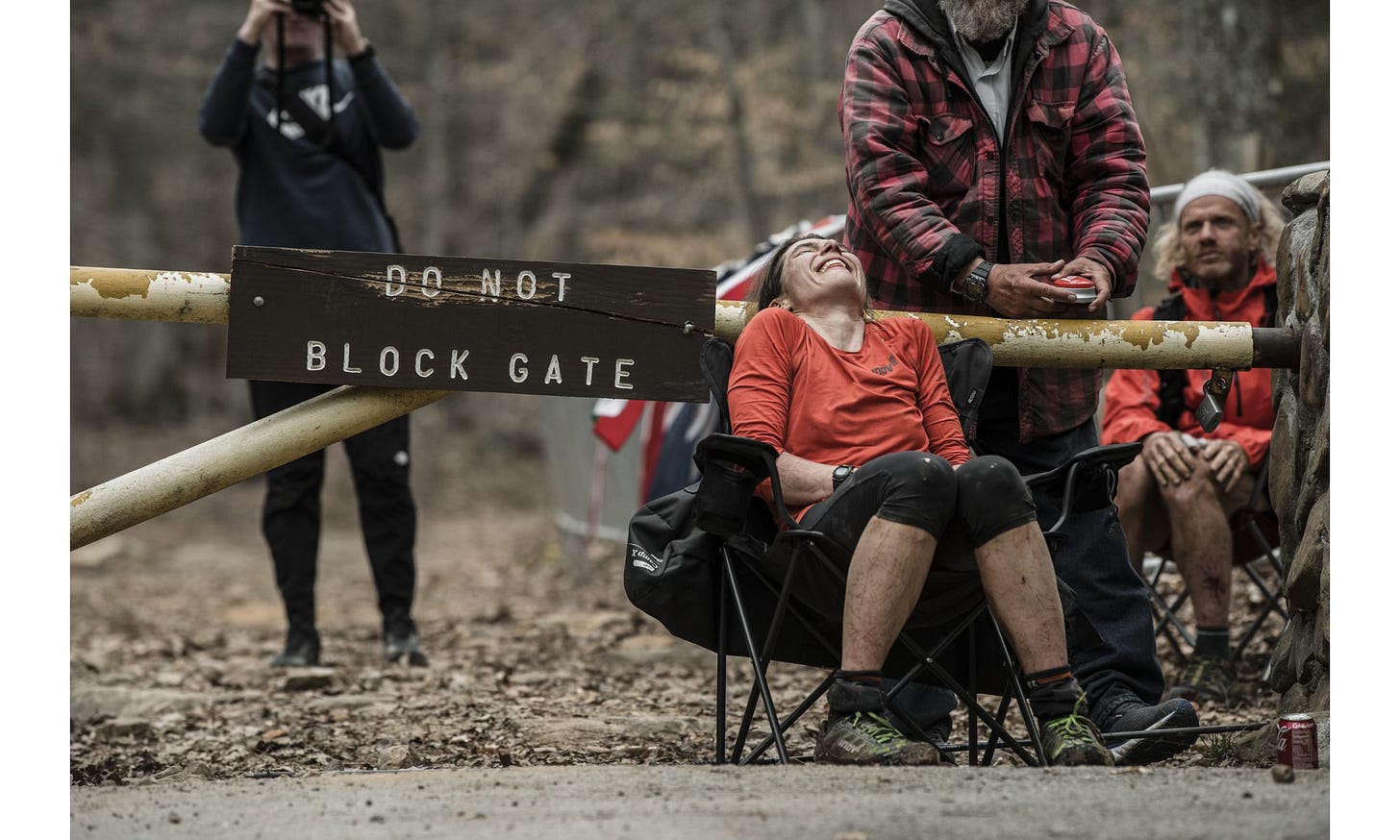
The book considers how she used her tolerance for sleep deprivation to outsmart competitors in the 268-mile Montane Winter Spine Race along the Pennine Way, while expressing breast milk for her daughter at checkpoints.
As covered by this magazine, she went on to become the first woman to complete the infamous Barkley Marathons in the USA.
Even more jaw-dropping than these achievements are the societal barriers and prejudices each woman had to overcome.
Eleanor Robinson couldn’t prepare for the inaugural 153-mile Spartathlon ultra marathon, because organisers only decided to let her compete at the last minute.
Yet she finished - in the top ten.
Multiple world record holder Mimi Anderson was on another ultrarunning challenge across America when she was followed by a man, determined to prove she was cheating.
There is much in the book that will resonate with today’s female runners.
Many still feel unsafe to run solo at night, have been shoved to the side during the Sheffield Round Run (ahem, me again) or win an ultra race only to find the organisers have packed away, because the men’s winners had finished.
Lily added: “There are so many inequalities, not just in endurance running, but across sport as a whole. We’d like the book to inspire women to realise they can do endurance sports - at any age.
“But it’s also a call to action for more scientists to start researching women properly, for race directors to change how they promote races to women and for coaches to understand that women’s bodies are different to men’s bodies, so the coaching should be different too.”
The timing of Ultra Women feels opportune.
Strava uploads and marathon entry data suggests more women are running than ever before. This, though women couldn’t compete in the Olympic marathon until 1984.
The inspiration for writing the book even struck thanks to ultra racing.
Sheffield Hallam University lecturers Lily and Emma decided to explore what was known about female endurance, as they would often find themselves among the few non-males taking part in such an event.
And they discovered an awful lot was known - just not by enough people.
Emma, who is based in Sheffield and specialises in medical journalism, said: “Eleanor Robinson’s story stood out for me because she only found out she could do the (Spartathlon) race the week before. The organisers had been deciding whether this race was even possible for a woman. She’s got so many world records, but I’d never heard of her until we were writing the book.
“Today, even though an ultra event might only have 20 per cent female runners, Lily and I are at least allowed to enter!
“When I was writing the book, and thinking about how recently women have been permitted to be involved, it struck home that this isn’t ancient history. It was happening when I was five.
“There was this historical idea that women were too weak, that medically they wouldn’t be able to compete in these events. But there’s lots of evidence that women have been taking part in endurance for centuries.”
Lily and Emma conducted six months of interviews alone to write the book.
And records were being broken even as they finished the last chapter.
They say Ultra Women has been received positively, and a promo talk held at Sheffield Adventure Film Festival in March sold out.
This from a book that several publishers rejected, as their attitude was ‘men buy sports books.’ That they do - but they’ve also been enjoying this one, say Emma and Lily, explaining its appeal.
Emma added: “If you are interested in inspirational stories and people doing amazing feats in the wilderness and up mountains, then it is a book for you.
“I am not a cyclist or a swimmer but I was so fascinated by those stories because it is about human endeavour.
“We do hope people will be inspired. But there are parts of the book that also make you angry when you realise that women’s endurance abilities have been ignored and suppressed for centuries.”
It feels like there is definitely room for a follow-up to Ultra Women. That may take a while, as the authors have another goal in their sights.
In September Emma and Lily take on the Equinox 24, a 24-hour loop race at Belvoir Castle, the longest the pair have ever endured.
Lily added: “We wanted to test ourselves and see how far we can push in 24 hours. “Really we signed up in the spirit of the book.”
Ultra Women: the Traiblazers Defying Sexism in Sport is published by Canbury Press.
It’s available for £16.99 at Rhyme and Reason, Ecclesall Road, and Novel, Crookes.Ellen Beardmore is a freelance writer and founder of Edit Sheffield. A former newspaper journalist and editor with 18 years of experience, she loves running, Sheffield, enthusing and writing about both. (@ellen.beardmore on Instagram)

Steps Change?
In March, we reported on the baffling existence of a nice path alongside the River Sheaf that no-one could use to get anywhere. A fence at both ends, one temporary for safety reasons, and the other because the developers of the STEPS rehabilitation clinic never got round to building the continuation of the Sheaf Valley Trail they were told to put in, when they were granted planning permission in 2016.
This week, the government’s Planning Inspectorate looked at the reasoning behind the non-existent path and decreed that, actually, yes they should finally get on with it.
We’ll not go into the interminable toing and froing that preceded this decision here, as the determined people at the Sheaf & Porter Rivers Trust (SPRT) have already done all that forensic planning analysis for us.
When I spoke to Simon Ogden of SPRT he said he much admired the work carried out by STEPS to help people in the city, but didn’t really understand their reluctance to get the path built, not least because of growing awareness of the huge health and financial benefits of enabling more people to get around by wheeling and walking.
Sheffield Council planning committee decided last autumn to enforce the original requirement of 2016 to build a 120 metre long trail wide enough for walkers, wheelchairs, bikes and pushchairs, and now STEPS and the original developer’s appeal against that decision has been rejected.
SPRT, the Millhouses, Ecclesall and Carter Knowle Community Association and local councillors have been campaigning to get the missing trail opened for six years, said Simon, adding that the question now is how the decision will be enforced. “We hope STEPS will do the right thing,” he said.
He knows that reluctant developers in the past often swept planning directives to build trails or improve the local environment under a heavy carpet woven from their own cost saving plans, along with the council’s lack of resources and sometimes lack of willingness to chase them up about what they hadn’t yet done.
This trail connection from Troutbeck Road (off Abbeydale Road), along with a small woodland link to the existing trail by Tesco, will join up two long stretches of the green corridor along the Sheaf between the city centre and Millhouses Park.
It’ll allow nearby residents, and users of the STEPS clinic, to get to Millhouses Park along a riverside trail, and give volunteers from SPRT the chance to monitor our river, and keep the Sheaf clear of rubbish and blockages.
“Getting this trail built will improve public health, increase active travel, boost biodiversity and enable better flood protection,” said Simon. “We think it’s a victory for the existing planning system.” Just a pity it’s taken nearly ten years. So far.
River Rangering
Earlier this week, a small group of volunteers from the city’s River Rangers clambered into a forgotten stretch of the River Sheaf behind Abbeydale Road to haul out over two years of domestic and building rubbish.
“It was around 2/3 of s skip worth of rubbish, including a fridge, bits of carpet and fencing, demolition debris and a mattress,” said one of the volunteers, Martin Stranex.
Staff from the River Stewardship Company’s Riverlution project stepped in to take the piles of rubbish away, and Martin said he felt volunteers and organisations looking after the city’s rivers were now starting to “get on top of the backlog of rubbish in the urban areas.”
The Sheaf is often the focus for voluntary work like this as around 100,000 Sheffielders live alongside or near its catchment, he reckons. There are fish and birds and insects living in and along our urban rivers (not least a family of at least nine ducks spotted on the cleared section on Monday), Martin pointed out.
“This is their world, and we want to make it as good as it can get.”
More River Rangers are needed across the city, to monitor and help clear up our rivers. Contact (or ideally join) one of our main voluntary river groups: the Sheaf & Porter Rivers Trust, Rivelin Valley Conservation Group, Friends of the Loxley Valley, the Upper Don Trail Trust and the Don Catchment Rivers Trust.
More What’s On Out There (from Sunday 8th June)
A tiny selection from our new (and regularly updated) What’s On Out There news and listings post for June and beyond.
Sun 8th - Active Wellbeing Family Event at Parkwood Springs
Sun 8th - Sheffield Conservation Volunteers - Broomhill Library Community Garden
Mon 9th - Greening of Urban Sheffield talk at Sheffield Botanical Gardens (£5)
Mon 9th - Friends of Whirlow Brook Park volunteer session
Tues 10th - Friends of Ecclesall Woods volunteer & footpath repair session
Tues 10th - Sheffield Ramblers Walk - Edale & Hope (5m)
Weds 11th - Shirebrook Valley - Volunteer Session
Weds 11th to Sat 14th - Big Green Week at Broomhill Library - Plant Sale & Swap
Thurs 12th - Green City Action Grimesthorpe community allotment
Fri 13th - SRWT Volunteering - Rivelin Reservoir
Fri 13th - Big Green Week, The Accidental Tree-Hugger talk by Calvin Payne at Broomhill Library
Sat 14th - RHS Fruit & Veg Expert evening, St Chad’s Woodseats
Next Sunday we hope to have more on what wildlife, wilderness and rewilding actually means, along with the return of Muddy Mother. And probably more wild surprises too. You know what to do….

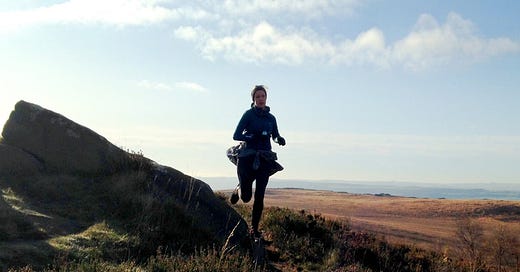



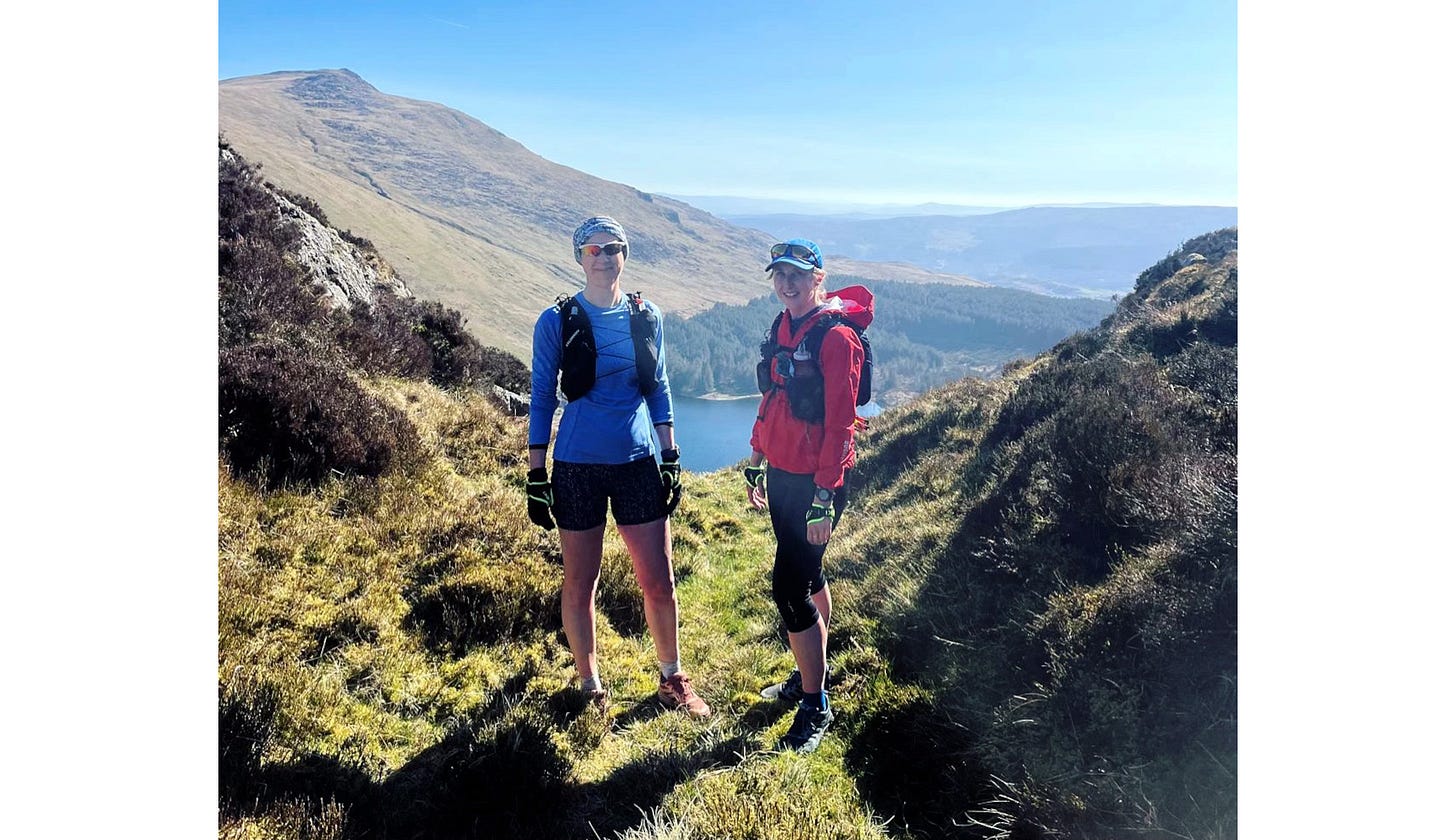
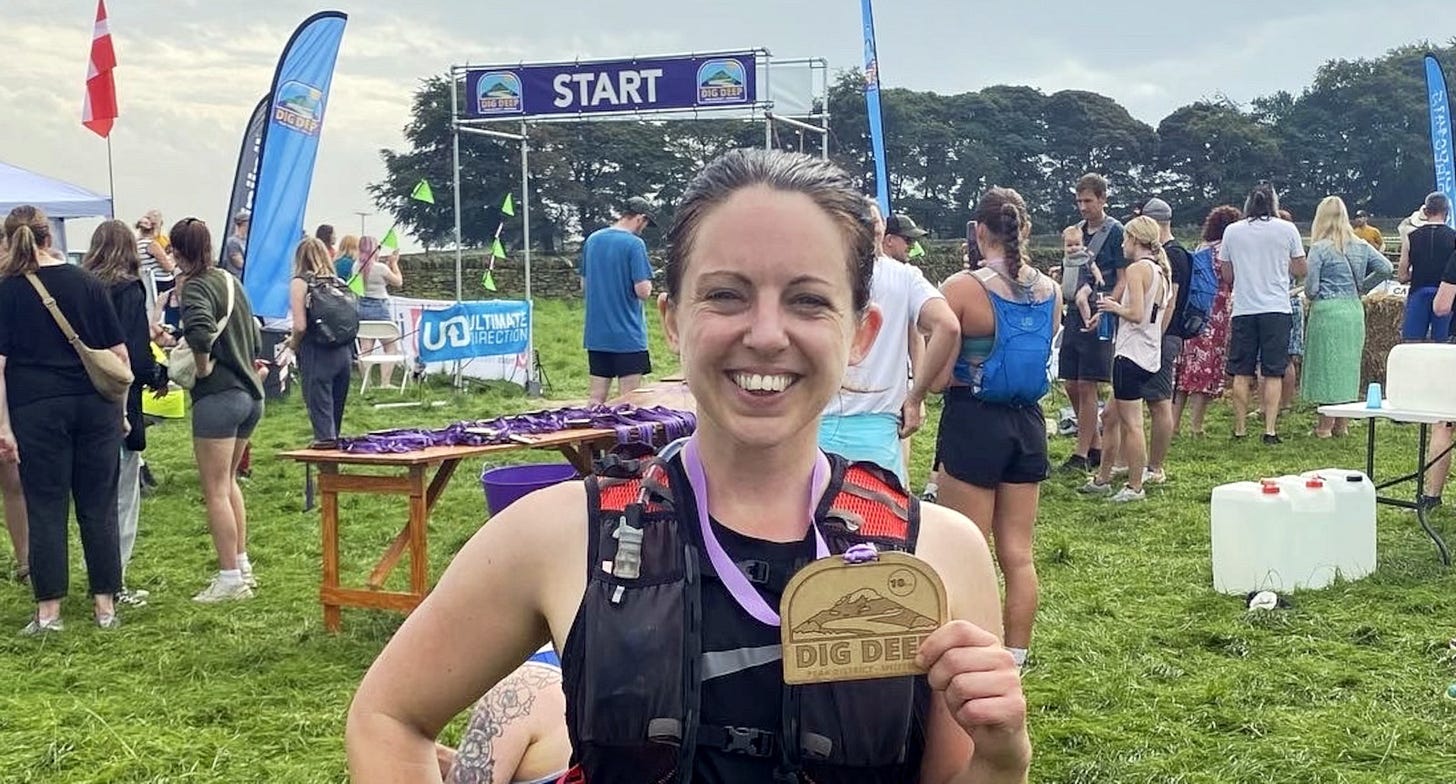
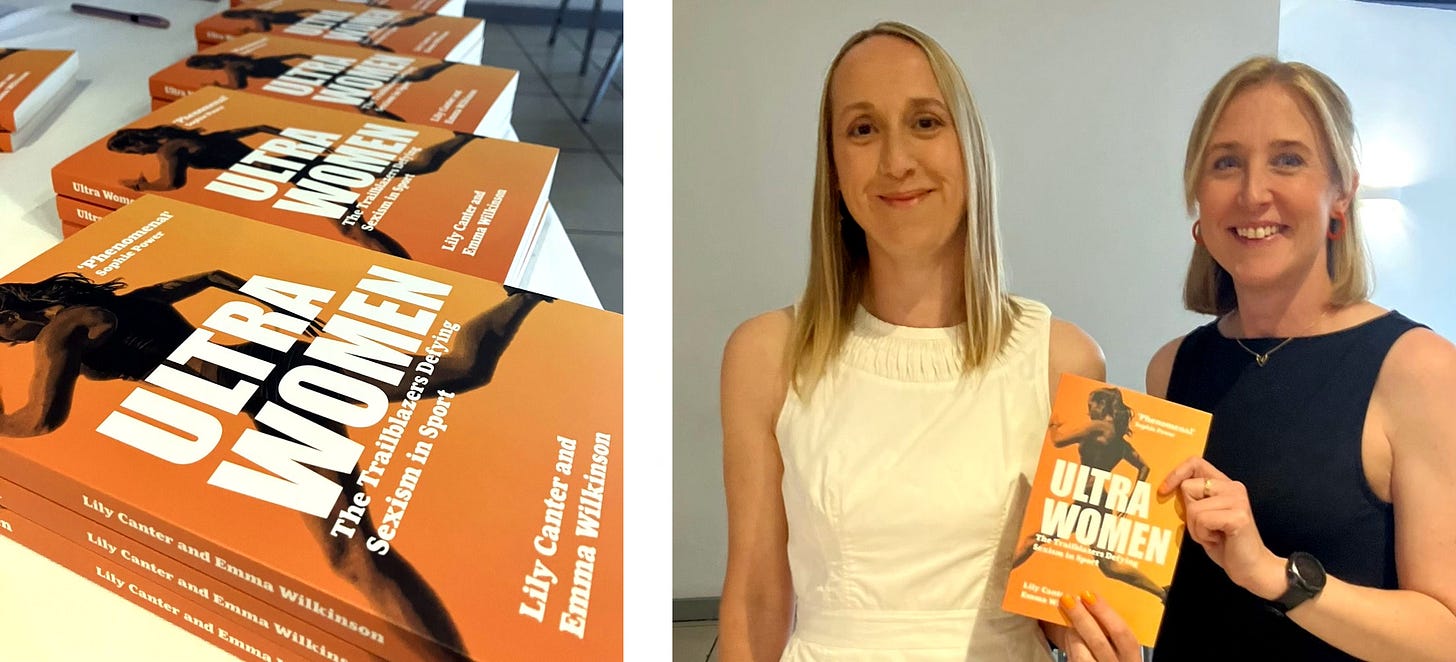

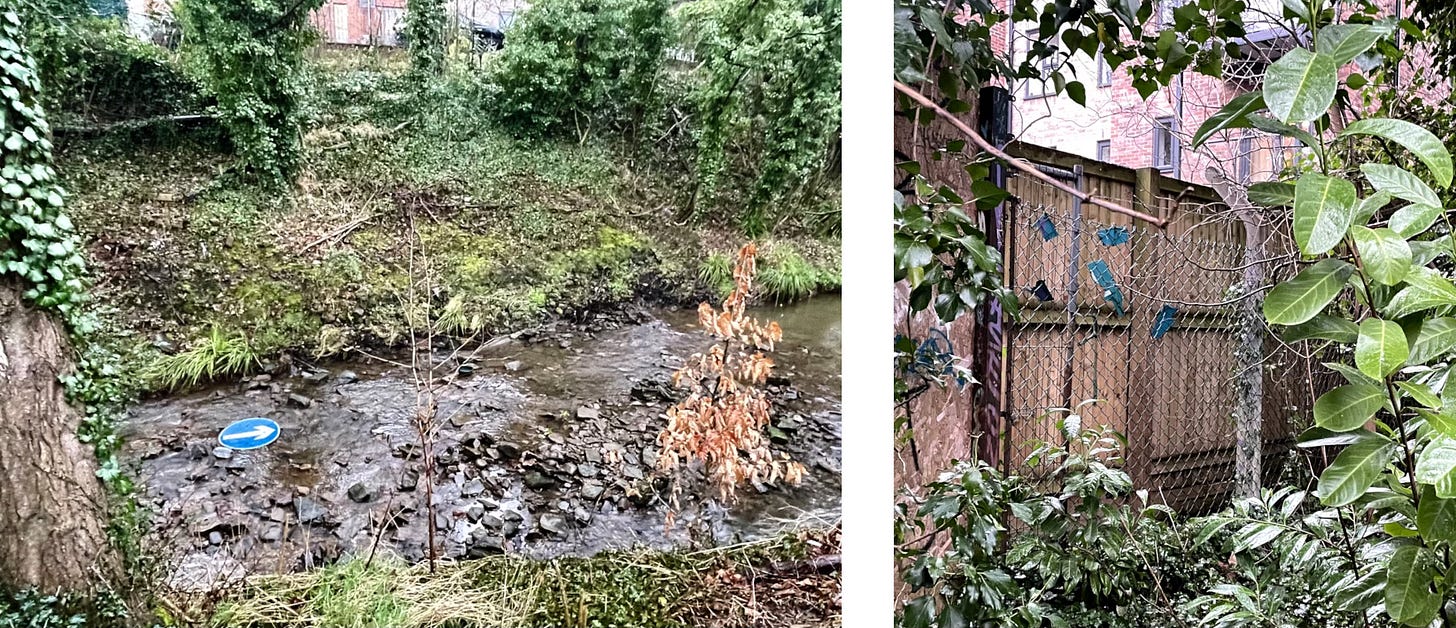

Great feature on the ultra running women. It was thanks to your interview with my ultra running daughter, Jennie Stevens, that I started subscribing!
Great piece! Thank you!